
How to Use LI-ION BATERRY: Examples, Pinouts, and Specs
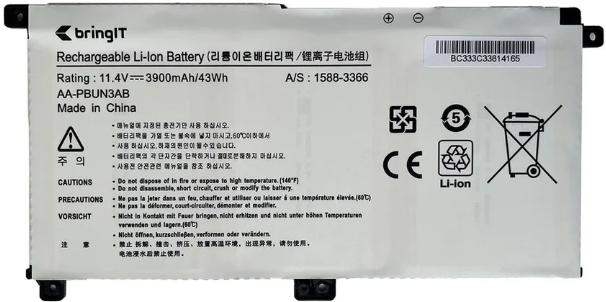
 Design with LI-ION BATERRY in Cirkit Designer
Design with LI-ION BATERRY in Cirkit DesignerIntroduction
The Samsung AA-PBUN34B is a rechargeable lithium-ion (Li-ion) battery designed for high-performance energy storage applications. Li-ion batteries are widely recognized for their high energy density, low self-discharge rate, and long cycle life, making them ideal for portable electronics, electric vehicles, and renewable energy systems. The Samsung AA-PBUN34B is a reliable power source for devices requiring consistent and efficient energy delivery.
Explore Projects Built with LI-ION BATERRY
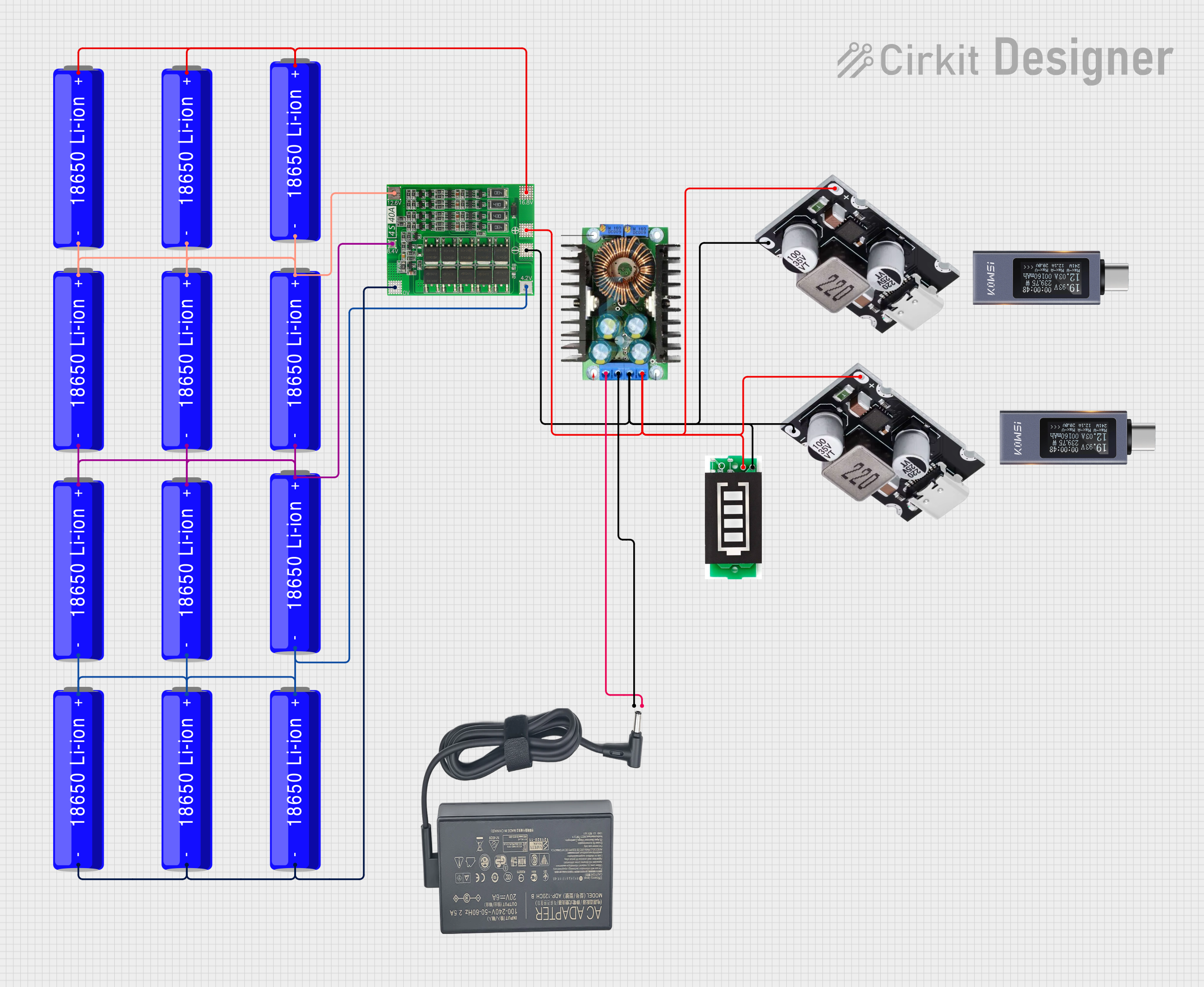
 Open Project in Cirkit Designer
Open Project in Cirkit Designer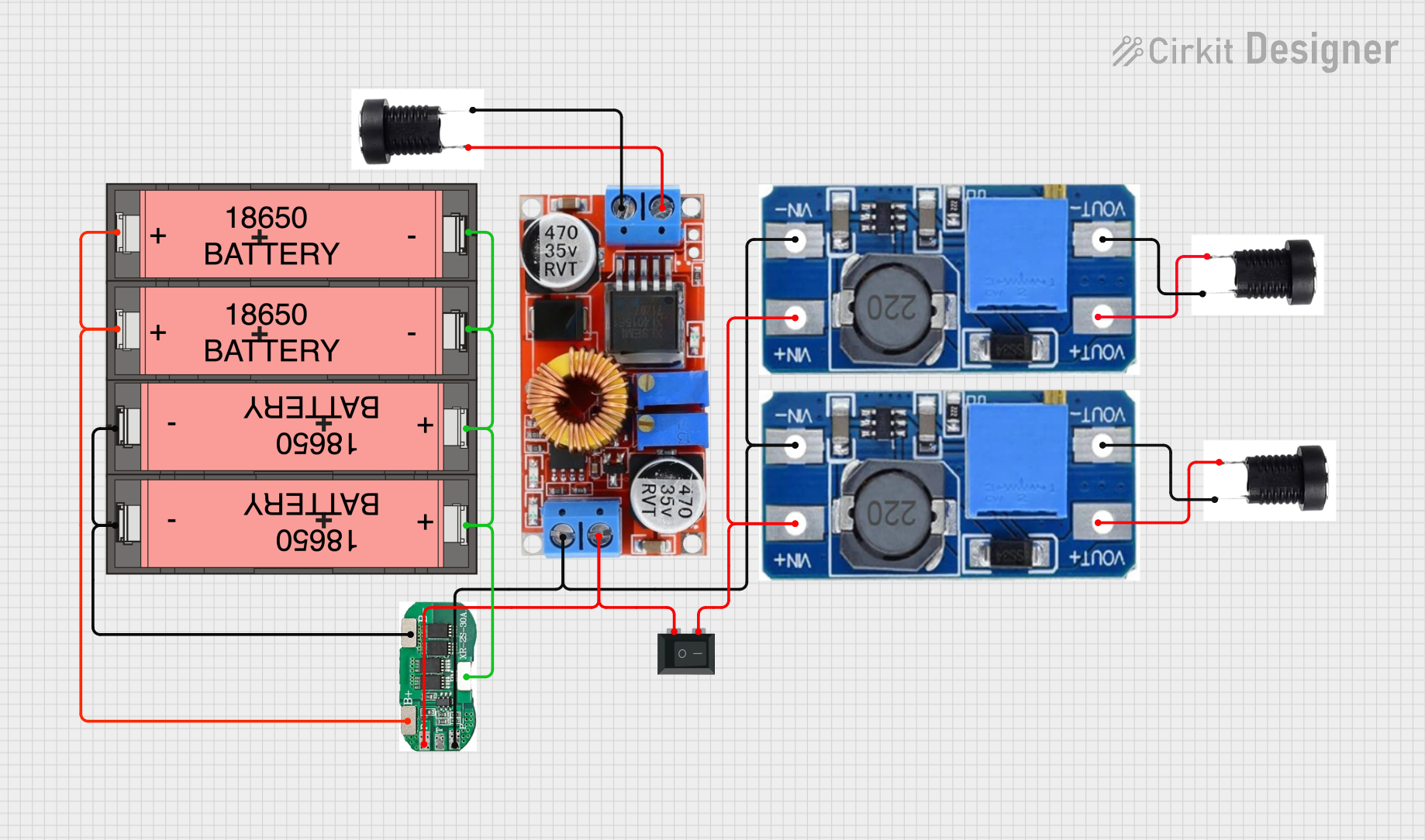
 Open Project in Cirkit Designer
Open Project in Cirkit Designer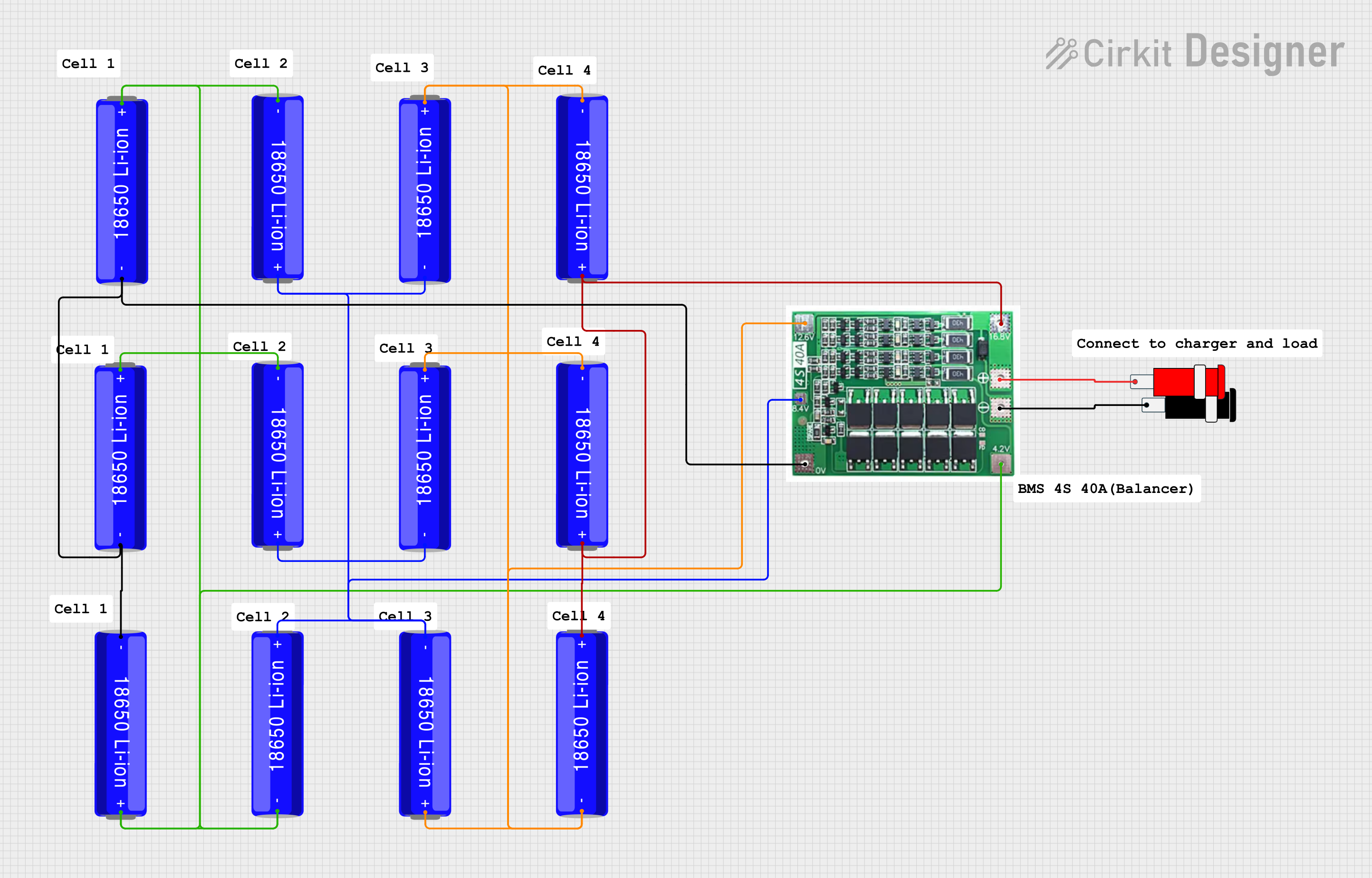
 Open Project in Cirkit Designer
Open Project in Cirkit Designer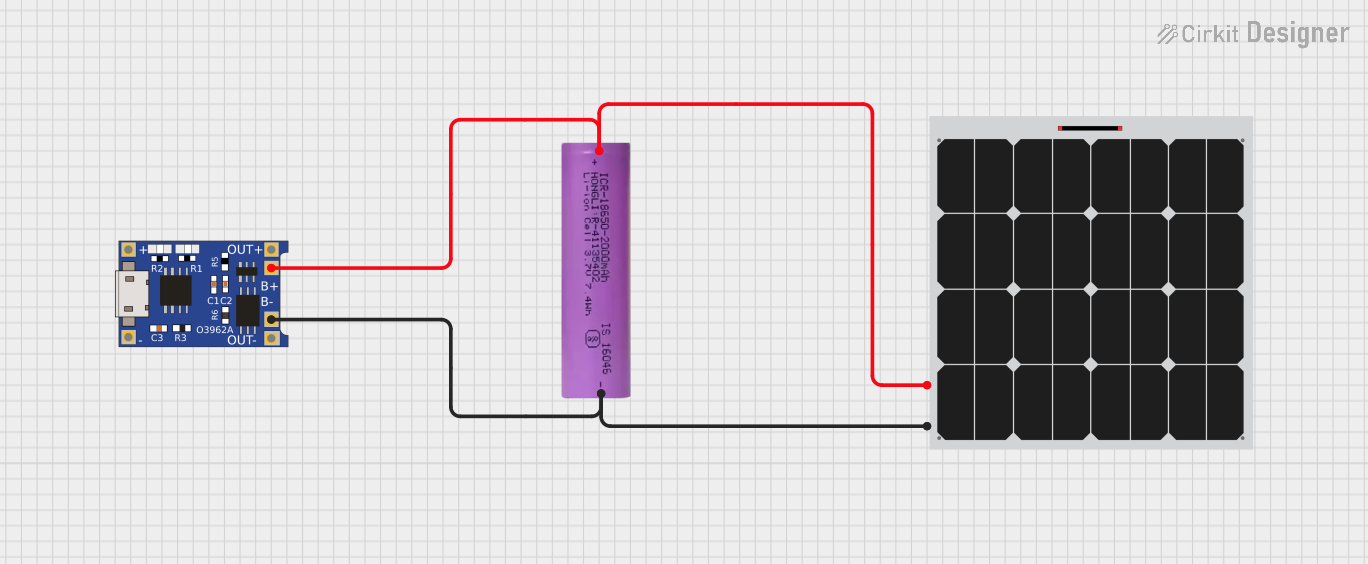
 Open Project in Cirkit Designer
Open Project in Cirkit DesignerExplore Projects Built with LI-ION BATERRY

 Open Project in Cirkit Designer
Open Project in Cirkit Designer
 Open Project in Cirkit Designer
Open Project in Cirkit Designer
 Open Project in Cirkit Designer
Open Project in Cirkit Designer
 Open Project in Cirkit Designer
Open Project in Cirkit DesignerCommon Applications and Use Cases
- Laptops and portable computers
- Smartphones and tablets
- Power banks and backup power systems
- Electric vehicles (EVs) and e-bikes
- Renewable energy storage (e.g., solar systems)
- Robotics and IoT devices
Technical Specifications
The following table outlines the key technical details of the Samsung AA-PBUN34B Li-ion battery:
| Parameter | Value |
|---|---|
| Manufacturer | Samsung |
| Part ID | AA-PBUN34B |
| Battery Type | Lithium-Ion (Li-ion) |
| Nominal Voltage | 11.1V |
| Capacity | 4400mAh (4.4Ah) |
| Energy | 48.84Wh |
| Charging Voltage | 12.6V (maximum) |
| Charging Current | 2.2A (recommended) |
| Discharge Current | 4.4A (maximum continuous) |
| Operating Temperature | 0°C to 45°C (charging) |
| -20°C to 60°C (discharging) | |
| Dimensions | 204.8mm x 49.4mm x 20.8mm |
| Weight | ~300g |
| Cycle Life | ≥500 cycles (80% capacity) |
Pin Configuration and Descriptions
The Samsung AA-PBUN34B battery typically includes a connector with multiple pins for power delivery and communication. Below is a general description of the pin configuration:
| Pin Number | Name | Description |
|---|---|---|
| 1 | Positive (+) | Battery positive terminal for power output |
| 2 | Negative (-) | Battery negative terminal for power output |
| 3 | SMBus Data (SDA) | Data line for battery communication (I2C protocol) |
| 4 | SMBus Clock (SCL) | Clock line for battery communication (I2C protocol) |
| 5 | Thermistor (NTC) | Temperature monitoring for safety and control |
Note: Pin configuration may vary depending on the specific device or application. Always refer to the device's datasheet or user manual for accurate pinout details.
Usage Instructions
How to Use the Component in a Circuit
- Connection: Connect the positive (+) and negative (-) terminals of the battery to the corresponding terminals of your device or circuit. Ensure proper polarity to avoid damage.
- Charging: Use a compatible Li-ion battery charger with a constant current/constant voltage (CC/CV) charging profile. Set the charging voltage to 12.6V and the current to 2.2A (or lower).
- Communication: If your application requires battery status monitoring, connect the SMBus data (SDA) and clock (SCL) lines to a microcontroller or battery management system (BMS) that supports the I2C protocol.
- Temperature Monitoring: Use the thermistor (NTC) pin to monitor the battery's temperature and ensure it operates within the safe range.
Important Considerations and Best Practices
- Avoid Overcharging/Overdischarging: Use a battery management system (BMS) to prevent overcharging (above 12.6V) and overdischarging (below 9.0V).
- Temperature Safety: Do not charge the battery below 0°C or above 45°C. Avoid discharging it below -20°C or above 60°C.
- Storage: Store the battery in a cool, dry place at 40-60% charge for long-term storage.
- Protection Circuit: Always use a protection circuit to safeguard against short circuits, overcurrent, and thermal runaway.
- Recycling: Dispose of the battery responsibly at an authorized recycling facility.
Example: Connecting to an Arduino UNO
If you want to monitor the battery's voltage and temperature using an Arduino UNO, you can use the following example code:
// Example code to monitor battery voltage and temperature using Arduino UNO
// Ensure proper connections: SDA to A4, SCL to A5, and NTC to an analog pin
#include <Wire.h> // Include Wire library for I2C communication
#define BATTERY_NTC_PIN A0 // Analog pin connected to the thermistor (NTC)
void setup() {
Serial.begin(9600); // Initialize serial communication
Wire.begin(); // Initialize I2C communication
Serial.println("Battery Monitoring Initialized");
}
void loop() {
// Read battery temperature from the thermistor
int ntcValue = analogRead(BATTERY_NTC_PIN);
float voltage = ntcValue * (5.0 / 1023.0); // Convert ADC value to voltage
float temperature = (voltage - 0.5) * 100.0; // Convert voltage to temperature (°C)
// Display temperature
Serial.print("Battery Temperature: ");
Serial.print(temperature);
Serial.println(" °C");
// Add delay for readability
delay(1000);
}
Note: This example assumes the thermistor outputs a voltage proportional to temperature. Adjust the calculations based on the thermistor's specifications.
Troubleshooting and FAQs
Common Issues Users Might Face
Battery Not Charging
- Cause: Faulty charger, incorrect charging voltage/current, or damaged battery.
- Solution: Verify the charger specifications and connections. Replace the charger or battery if necessary.
Overheating During Use
- Cause: Excessive current draw or operation outside the recommended temperature range.
- Solution: Reduce the load on the battery and ensure proper ventilation. Use a BMS for thermal protection.
Shortened Battery Life
- Cause: Frequent deep discharges, overcharging, or exposure to high temperatures.
- Solution: Avoid deep discharges and overcharging. Store the battery in a cool, dry place.
Inaccurate Battery Status Readings
- Cause: Faulty SMBus communication or incorrect pin connections.
- Solution: Check the SDA and SCL connections. Ensure the microcontroller supports the I2C protocol.
Solutions and Tips for Troubleshooting
- Always use a multimeter to verify the battery's voltage and connections.
- If the battery is not recognized by the device, check the pin configuration and ensure proper alignment.
- For communication issues, use an oscilloscope to debug the I2C signals on the SDA and SCL lines.
By following this documentation, users can safely and effectively integrate the Samsung AA-PBUN34B Li-ion battery into their projects and applications.